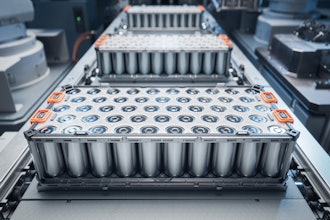
A “broken” digital camera or two. An old iPod and some “classic” handsets, made obsolete by newer, better models. An unused radio. That old tank of a laptop. How many of these or the like are in your own home? According to new research from United Nations University, the answer is probably a lot and the problem is only getting worse.
In its “Regional E-waste Monitor” report released Sunday, United Nations University highlighted the issue of rising volumes of e-waste, with a particular focus on East and Southeast Asia covering nearly 30 percent of the world’s population. Data in the report indicated the volume of discarded electronics in the region jumped by nearly two-thirds in the five year period from 2010 to 2015, with e-waste generation “growing fast” in both total volume and per capita measures.
The report looked at the specifics of 12 countries in the area – Vietnam, Thailand, Taiwan, Singapore, the Philippines, Malaysia, South Korea, Japan, Indonesia, Hong Kong, China, and Cambodia – and found e-waste volumes there in 2015 hit 12.3 million tonnes. The figure marked an increase of 63 percent over the e-waste volume recorded in 2010, the report noted. During the aforementioned period, e-waste generation in China alone more than doubled to reach 6.7 million tonnes in 2015.
The report indicated rising volumes of e-waste can be attributed to a boom in production spawned by increasing incomes and consumer demand for electronics like smartphones, tablets, and wearables, as well as a shortening of product life cycles thanks to frequent device upgrades. Many of the products being produced, the report observed, are “designed for low-cost production, but not necessarily repair, refurbishment, or easy recycling.”
Global Impact
But the problem isn’t isolated to Asia.

While Asia led e-waste generation in 2014 with an estimated 16 million tonnes, the report also showed the rest of the world wasn’t far behind, with North and South America generating 11.7 million tonnes, Europe contributing 11.6 million tonnes, Africa generating 1.9 million tonnes, and Oceania producing 0.6 million tonnes. Per capita generation was highest in Europe, Oceania and the Americas, with 15.6 kg, 15.2 kg and 12.2 kg, respectively. Asia and Africa had the lowest per capita e-waste generation, with 3.7 kg each.
Though the report lauded countries like Japan, Korea, Taiwan, the Philippines, and China for their laws establishing e-waste collection and recycling systems, it also noted the prevalence of improper and illegal e-waste dumping across the board regardless of legislation. Additionally, the report noted practices such as informal or “backyard recycling” that use acid baths to recover gold, silver, palladium, and copper from circuit boards and wires can produce toxic fumes and be hazardous to the health of residents and workers.
“For many countries that already lack infrastructure for environmentally sound e-waste management, the increasing volumes are a cause for concern,” U.N. University Co-Author Ruediger Kuehr said. “Increasing the burden on existing waste collection and treatment systems results in flows towards environmentally unsound recycling and disposal.”
A Look Stateside
According to Compass Intelligence estimates, more than 30 percent of U.S. smartphone subscribers recycled their devices in 2015. By 2019, the first predicts an estimated 177 million devices will be recycled out of a total of 475 million idle devices (think the ones tucked away in your dresser). And the firm noted a substantial revenue opportunity exists in the proper disposal of e-waste.
A recent IDC forecast noted the market for used and refurbished smartphones is expected to hit $30 billion by 2020, but Compass Intelligence said more than $4 billion in revenue was reaped from recycling around 100 million devices last year – and that doesn’t even count the revenue generated by recycling precious metals present in the devices.
Some large manufacturers, like Apple, have already begun to tap into this stream. In Apple’s case, the company built LIAM, a line of robots designed to disassemble the iPhone 6 into individual components, making it easier for the company to recover resources like aluminum, gold, and cobalt from the devices.
“We also see a huge opportunity to improve the way we reclaim finite resources from our products,” Apple wrote in the report. “Existing recycling techniques, like shredding, only recover a few kinds of materials and often diminish their quality. So we invented LIAM.”
According to Apple, LIAM is designed to take apart 1.2 million phones each year. In 2015, Apple reported its “take-back” initiatives, including LIAM, allowed it to recover nearly 61.4 million pounds of material for reuse. That figure includes 23.1 million pounds of steel, 13.4 million pounds of plastics, 11.9 million pounds of glass, 4.5 million pounds of aluminum, 2.95 million pounds of copper, 189,544 pounds of colbalt, 39,672 pounds of nickel, 44,080 pounds of lead, 130,036 pounds of zinc, 4,408 pounds of tin, 6,612 pounds of silver, and 2,204 pounds of gold.
In its report, Apple called LIAM “an experiment in recycling technology” and noted “we hope this kind of thinking will inspire others.”






















